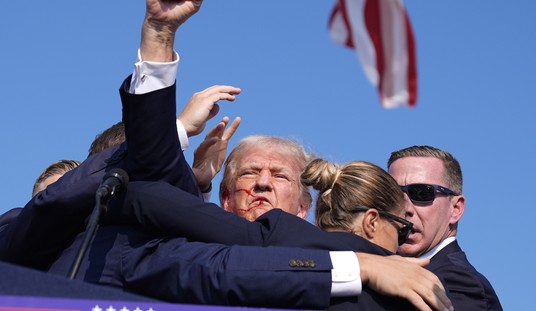It is actually possible not so see something that is really there if the signal it emits does not match the human visual spectrum and/or our visual signal processing system eliminates the sight of it as noise. We can’t see patterns that our brains have filtered out. When a terrifying creature from outer space has these attirbutes in a science fiction/horror movie the result is something like the Predator. In movies of that type, much of the action revolves around learning how to see the monster and the remainder on how to defeat it. The Economist article entitled “The Confessions of a Risk Manager”, written by a risk manager at a “large global bank” describes how this can happen, not in a science fiction/horror movie, but in the actual world economy.
In January 2007 the world looked almost riskless. At the beginning of that year I gathered my team for an off-site meeting to identify our top five risks for the coming 12 months. We were paid to think about the downsides but it was hard to see where the problems would come from. Four years of falling credit spreads, low interest rates, virtually no defaults in our loan portfolio and historically low volatility levels: it was the most benign risk environment we had seen in 20 years.
Here was a team of financial professionals, the equivalent of an elite special forces team, specially trained to seek out and destroy risk. They were confident in their weapons and capabilities, but skeptical about whether any real enemy actually existed.
The possibility that liquidity could suddenly dry up was always a topic high on our list but we could only see more liquidity coming into the market—not going out of it. … “Where is the liquidity crisis supposed to come from?” somebody asked in the meeting. No one could give a good answer.
But although the risk hunters saw no danger as they stared into the seemingly benign financial jungle, in retrospect, there were certain signs — whose significance was not realized then — that should have sounded the alarm about the crisis that is now upon us. “Looking back on it now we should of course have paid more attention to the first signs of trouble. No crisis comes completely out of the blue; there are always clues and advance warnings if you can only interpret them correctly. It was the hiccup in the structured-credit market in May 2005 which gave the strongest indication of what was to come.” The signs were there, but they couldn’t interpret them, even when strange and unusual things were happening. Part of the problem with grasping the significance of the anomalies was that the risk hunters were prisoners of their analytic models. What cues they picked up were interpreted in the context of their mental frameworks. They “saw” through the prism of their models. And their models did not account for the existence of the monster that was now closing in on them. The risk hunters were handicapped by one more factor: they were under immense psychological pressure not to raise the alarm in order to avoid panic in the population. We all know the movie moment when the hero, by now alarmed at the sudden disappearance of his colleagues exploring dark corners, is warned by his supervisors not to ‘spread wild rumors about invisible monsters from outer space who don’t exist’. Those movie lines are usually uttered just before the monster itself grabs him through an open window. The anonymous risk manager writes about the pressure to keep the lid on:
The pressure on the risk department to keep up and approve transactions was immense. Psychology played a big part. The risk department had a separate reporting line to the board to preserve its independence. This had been reinforced by the regulators who believed it was essential for objective risk analysis and assessment. However, this separation hurt our relationship with the bankers and traders we were supposed to monitor. In their eyes, we were not earning money for the bank. Worse, we had the power to say no and therefore prevent business from being done. Traders saw us as obstructive and a hindrance to their ability to earn higher bonuses. They did not take kindly to this. Sometimes the relationship between the risk department and the business lines ended in arguments. I often had calls from my own risk managers forewarning me that a senior trader was about to call me to complain about a declined transaction. Most of the time the business line would simply not take no for an answer, especially if the profits were big enough. We, of course, were suspicious, because bigger margins usually meant higher risk. Criticisms that we were being “non-commercial”, “unconstructive” and “obstinate” were not uncommon.
I wonder to what extent the policy reaction to the current financial crisis is still colored by the limitations of received wisdom — the financial models — and the need to keep the music playing. The interventionary mechanisms of the last few weeks are designed to fix problems as we understand them. If you’re convinced we understand things now. At any rate we are firing into the last known position of the monster. Nothing can withstand that firepower. The crowds are being told not to worry because the monster will soon be dead. True, there are few doubting souls who are worried that the creature may actually be feeding off our weapons, but their fears are dismissed as nonsense. The important thing, we are told, is to keep things going, which was just the advice the traders gave the risk managers.
As we near the end of the first decade of the 21st century, these unexpected storms arising from the complexity of our modern social systems should by now be familiar. Take September 11. It is remarkable how the advent of the current financial crisis structually resembles the intelligence failures leading up to 9/11: the same misinterpretation of warning signs, the same blindness to threats now evident in retrospect. The same belief in a rapid resolution and a belief that the normal would soon be back. There are even similarities in the discovery process related to the financial meltdown and the campaign against al-Qaeda. On September 12, only a small percentage of the public was dimly aware of how extensive the problem of Islamic extremism actually was. They knew nothing of the underground nuclear marts, collusions between allies and the enemies, about Sunni and Shia nor even of the debates within the expert’s ranks themselves. Eventually the public got a grip on things, but neither understanding nor success came quickly. One lasting benefit of the experience in the War on Terror is that observers soon came to understand that invisible monsters can exist — and that perhaps the struggle against such monsters is never ending. Is the beast dead yet? Wait … what’s that rustling in the trees coming from the other direction?










Join the conversation as a VIP Member